Introduction
Productivity is a crucial differentiator in an accelerated digital world; it goes way beyond being trendy. The modern worker is not only dealing with time scarcity, we are now multitasking our way through life while managing increasing cognitive demands all in the name of getting things done. From a digital app or software to methodologies, and techniques — productivity tools are indeed handy for anyone who wants to make the most of their time. But using these tools in any meaningful way is more than just downloading an app, it requires one to understand the principles behind productivity and apply them effectively across different contexts. – Productivity Tools Books

Enter the books about productivity tools. They offer a lot of practical tips for using the gear on hand, but also delve into the psychology behind productivity and why certain techniques work and how you can adapt them to your lifestyle. Through this post, we take you through six key works in productivity tools that may help change your work for the better process and improve use of time.
Books on Productivity Tools
Productivity tools include a number of different strategies, apps and techniques to better manage your tasks time and energy. Take a deeper dive into six must-read books that cover the nuts and bolts of driving productivity tools tip-top:
1. “Getting Things Done: The Art of Stress-Free Productivity” by David Allen
Summary:
Getting Things Done (GTD) by David Allen is usually the productivity bible. It presents a thorough method for controlling responsibilities, projects and jobs in order to reduce strain while enjoying more effective usage of your time. Allen posits that our minds are for having ideas, not holding them — and by getting things out of our heads and into a system (any organized approach will do), we can release the cognitive overhead needed to think creatively.
Key Lessons:
- The GTD Workflow: Allen gives you a systematic five-step workflow for processing things in your life, which consists of Capture — Clarify — Organize — Reflect— Engage. Every step of the way gives you feedback to help take care of your immediate as well long-term duties without feeling buried by them.
- Capture: Gather all of your “stuff” — anything that has your attention at any time whether concrete or abstract. Usually this would be an app (software solution), or a notebook, also your physical inbox.
- Organize: Determine what each thing represents and what you need to do with it. If an email is sent in needing a response, make sure that you clearly spell out what this response will look like and when it needs to be received.
- Categorize: Place tasks and information in the right boxes like Next Actions, Projects or Someday/Maybe The rank order of things to do dopamine helps you get everything done well and on time.
- Review your goals/tasks: regularly A weekly review is considered to be the keystone of good GTD practice, and for maintaining your workflow.
- Stage 3: engage with what do you need to actually be doing (and when) at any given moment. In fact, Allen makes succinct focus on the next action instead of being consumed with all you need to ultimately complete.
- Immediate Next Actions: perhaps the most powerful concept in GTD is the “Next Action”. This simple act of breaking apart tasks into concrete steps will help you stop procrastinating and ensure you continually push forward with your work. You are not stuck worrying about an intimidating project, you think only of the very first thing on your list.
- The Significance of Capturing: Allen stresses the critical nature of recording every task, idea or responsibility within hours after realizing it. This process makes sure nothing gets missed and it helps you execute instead of just remember. They will also reduce the mental burden so that your mind is free for better and more creative thinking.
Practical Application: The first step to applying the GTD system is capturing all your tasks and responsibilities into a trusted system like an app (Todoist) or notebook format. So describe each point and sort them by priority, subject etc. Check your lists at regular intervals and review the progress you are making — altering your plans as needed. In the end, execute your obligations by concentrating on what needs to be done next At any time and make forward progress. The GTD system is also flexible in that it can be used to control both personal tasks and work process, making it useful for organizing complexity.

2. “The 4-Hour Workweek: Escape 9-5, Live Anywhere, and Join the New Rich” by Timothy Ferriss
Summary:
Timothy Ferriss’ book The 4-Hour Workweek is all about questioning the cliché of working hours for productivity and instead creating a lifestyle that speaks to being effectiveness-based, an automatic day-to-day flexibility improvement so you can go on your own terms. Ferris introduces a number of productivities tools and methods that will have you able to get more done, in less time making room for personal endeavors and lifestyle design. Millions of people were encouraged to reconsider their work habits — focusing on productivity over hours and using technology in a way that suited you, not your employer.
Key Lessons:
- Time Management principals as productivity tools: This is probably my favorite aspect of Ferriss book.
- The Pareto Principle (80/20 Rule): This principle argues that 80% of your results are produced by only 20% of you… Recognizing and prioritizing your highest-performing tasks allows you to do more in less time.
- Parkinson’s Law: Parkinson’s law is the adage that “work expands so as to fill the time available for its completion”. Ferriss tests out successively shorter timeframes to maximize work for the allotted window, preventing it from expanding (and continually sucking up more and more space).
- Outsourcing: One of the biggest tools Tim Ferriss promotes is outsourcing. Use other people to do the things that don not require your direct involvement (such as admin work, customer service or even some personal errands) — Using a facility of talent fro you side makes it easier for them fend themselves without needing their egos felt & focused on high-value activities. Ferriss also explains the process of hiring and working with virtual assistants, as well as how to decide what tasks should be outsourced.
- Automation: Ferriss continued to hammer on the point that all of this could be automated for more time and mental space. Autoresponders, email filters and workflow automation are just a few of the tools he covers to help remove you from any manual work. One example of this is by automating responses to some of the most common email inquiries — doing so can save hours a week.
- Mini-Retirements: Ferriss also comes up with the term mini-retirement (kind of a retirement continuum!) which should replace big old-end-of-career-on-a-cruise boat retirements we are accustomed to stand living at once away from our working life. This is possible through the productivity tools, and lifestyle design approaches he recommends enabling you to work less (or as needed) while living more.
Practical Application: Get the ball rolling by adapting Pareto Principle, to determine which 20% of tasks results in achieving most and concentrate or expand on them. Parkinsons Law: Parkinson would be delighted to find that he was relatively right in stating “tasks will expand so as to fill the time available for its completion” CC0 License P. Paraskevas Also, consider outsourcing non-core activities that do not need your attention and using automation tools to improve the efficiency of task execution. Wait guys, let me enjoy the autumn for one second before I dump a big fuckin’ lump of ambition and aspiration all over your chests. Just ask yourself —– what can you do with 8 hours per week (each probably resulting in more than $15k increased lifetime wealth depending on the degree). Think about weaving mini-retirements into part of your lifestyle design using this time / financial freedom to travel or learn/another side project/passion! This is a technique that works especially well for entrepreneurs, freelancers and remote workers in need of work-life balance.
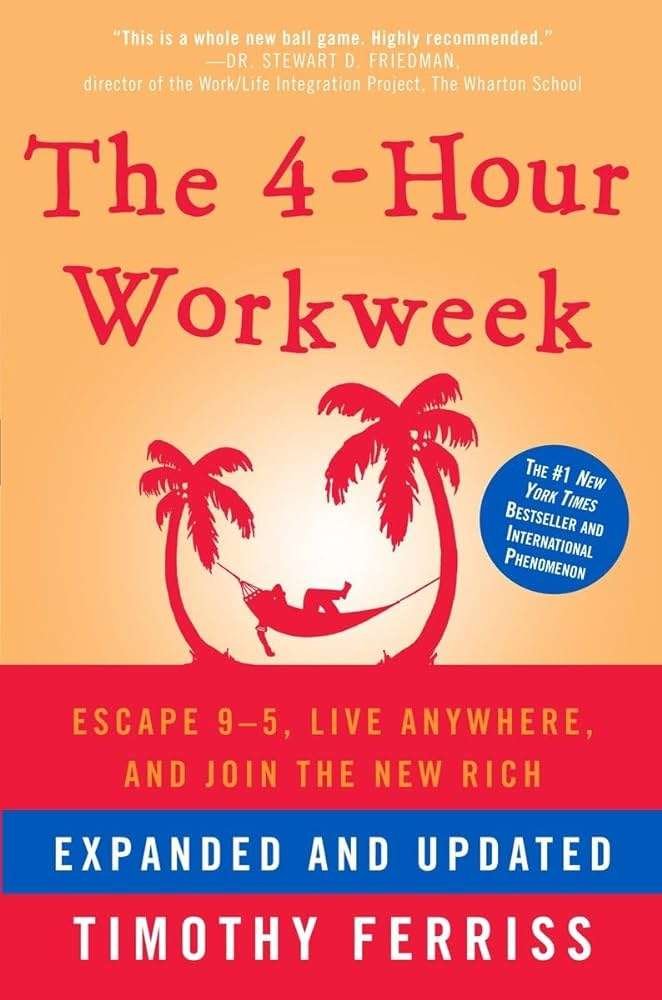
3. “Atomic Habits: An Easy & Proven Way to Build Good Habits & Break Bad Ones” by James Clear
Summary:
Atomic Habits by James Clear (Not a productivity tools book, but a foundational explanation of the effect habits have on personal productivity. Its reading will provide a set of tactics for creating good habits, and also show you how to get rid of bad ones – an important skill if you want to stay productive over time. Built on years of behavioral science research, Clear is very practical and solid for those who are looking to implement punch card changes in their everyday life.
Key Lessons:
- Habit Stacking: Clear introduced one of the simplest productivity hacks, habit stacking which is nothing but connecting new habits to old ones. Like, you may have a current habit of drinking coffee in the morning and you can stack reviewing your daily goals right after that cup if coffee. This trick made it more convenient to adopt new habits because I tied them with a habit that had been instilled in me since childhood.
- Clear: The Four Laws of Behavior Change outlines four laws that we can follow to actually build and stick a habit; these in themselves could be considered productivity tools.
- Design the Environment: Make it Hard to Forget Build Your Habits with a More Obvious Physical or Digital Cue/Trigger For instance, you wish to start exercising each morning so will place your exercise clothes out the night prior.
- Probably, make it attractive: couple habits with things that we love to use them as reward for ourselves. As you know, people like to listen to podcast or music during their workout time. So make sure they only have access when exercising!
- Ease of Maintenance: Lower the friction on your habits. Make it so easy to get started. No matter what you want to do, if there is a notebook and pen on your nightstand.
- Make it Satisfying: The Last Step Is to Reward Yourself for the Daily Practices, Making It Satisfying. It can be as seemingly trivial as crossing off a box on your habit tracker.
- Small wins and changes make a big difference: They can lead to compounding good habits over the long-term. This concept is often known by a different term: the “aggregation of marginal gains” — where, by improving 1% every day, slowly but surely you will make significant strides towards productivity heaven over one year.
- Designed For Reality: In this chapter, Clear writes that one should shape the environment in a way to support habit reinforcement. With a well-planned physical space, you will rely much less on your willpower to help enforce productive behaviours and disincentives against time-wasting distractions.
Practical Application: To implement the lessons from “Atomic Habits”, begin with determining a new productive habit you wish to establish and then attach it to another routine by associating those habits. Employ the Four Laws of Behavior Change to create habits that can then easily morph into more challenging and complex ones over time. Make small, regular changes and beat yourself against the head with it every day, not blast into trying to do everything in one go. Also, create your environment to make doing those favored habits easy and not do other things as difficult. This helps a lot with building productivity habits that last because short term success does not typically convert into long-term sustainability.
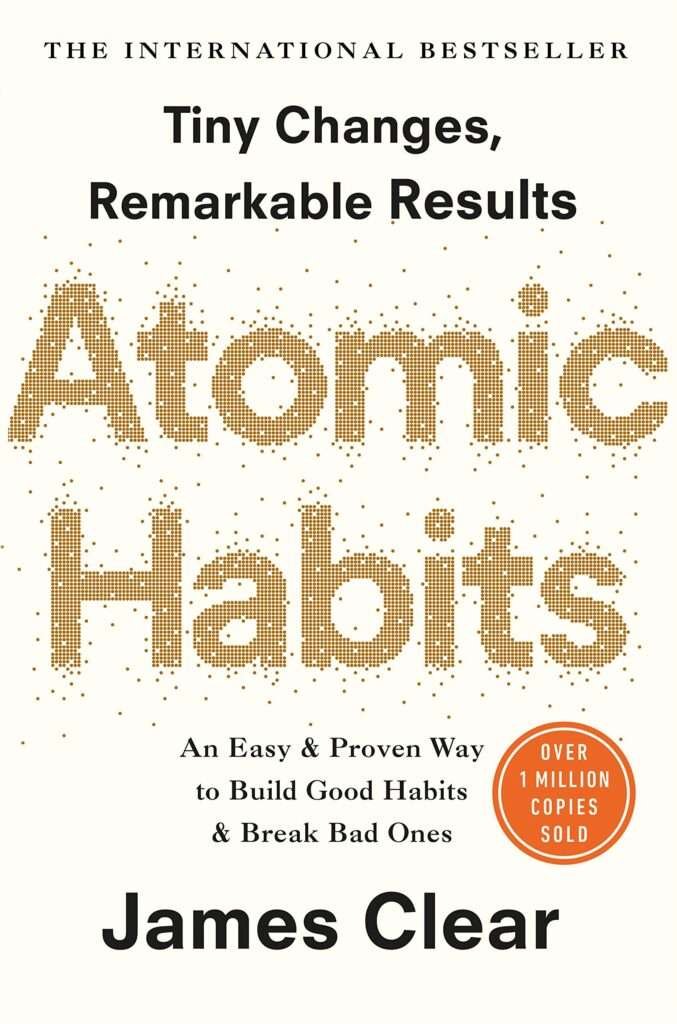
4. “The Productivity Project: Accomplishing More by Managing Your Time, Attention, and Energy” by Chris Bailey
Summary:
In The Productivity Project, Chris Bailey shares the results of a year-long experiment in which he tried out all types of productivity tools and methods to find what really works. The book is loaded with actionable tips for controlling your time, focus and energy – the three crucial ingredients in productivity. Bailey writes using a mix of evidence approach and practical experience that gives you an relatively balanced perspective to be truly productive.
Key Lessons:
- Rule of Three: Perhaps one of the best results found in this book is things like Rule Of three or any other productivity tools introduced here. The idea is a process simply known as the big threes, which helps you to identify three prioritised tasks that need to be achieved on each day. This way, you can gain confidence that you are actively working toward your top three priorities without worrying so much if other things intervened.
- Time Management Tricks: Bailey dabbles in a number of ways to manage your time, such as;
- Time blocking: Setting aside blocks for time to work on expiratory measures of focus.
- The Pomodoro Technique : Doing work in short, timed intervals. (usually 25 minutes) followed by a break which helps you stay focused and avoid burnout.
- Noun: Task Batching Grouping like tasks to minimize the type switching cognitive load.
- Attention Management — Bailey explains how to manage attention in a world full of distractions. He also gives tips on how to stay focused such as :
- Distraction Removal: Creating a pause for work as minimizing Ambience during the working hours, disabling those notifications or Unsettling applications that generally block using such websites.
- Mindfulness and Meditation — It means to become more aware and able to focus your attention when you have chosen.
- Fixed Work Begins And Ends: Declaring the time that work starts and ends(advance warning to colleagues).
- The Role of Energy Management: The book also covers an in-depth look into the role energy management plays on productivity. Productivity is not just about managing time, but aligning your tasks according to when you perform best — Bailey He suggests:
- Partnering with Your Chronotype: Knowing if you are a morning or night person, and then using your “best” time to do important work.
- Breaks: Scheduling regular breaks throughout the day to recharge and avoid burnout.
- Body Maintenance exercise/nutrition: Exercise to keep yourself fresh and having your proper food so you have energy throughout the day.ur tasks with your natural energy levels. He suggests:
- Working with Your Chronotype: Understanding whether you’re a morning person or a night owl and scheduling your most important work during your peak energy periods.
- Taking Breaks: Incorporating regular breaks throughout the day to recharge and prevent burnout.
- Exercise and Nutrition: Maintaining physical health through exercise and proper nutrition to sustain energy levels.
Practical Application: Step 1 is using the Rule of Three, with which you create a list of three things that are most important for you to do every day. Try different time management hacks like Time Blocking, Pomodoro technique. Try them and see what works best for you Practice attention management to keep your mind in the game and control distractions throughout daily life, as well as structuring tasks according to your energy levels so that you utilise them better t remain productive during high-performance. Also, take a look at implementing mindfulness practices in your day-to-day to improve concentration and relaxation. This format is one of the best you can follow if you are prone losing focus or struggling to have enough energy thought your day.
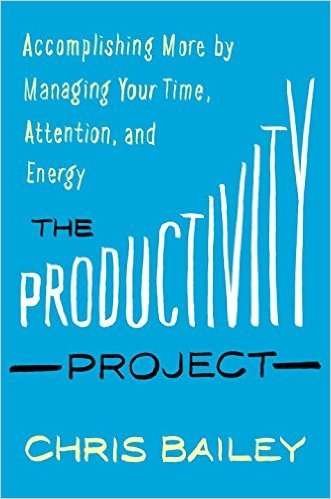
5. “Deep Work: Rules for Focused Success in a Distracted World” by Cal Newport
Summary:
The idea of deep work as a way to accomplish great things Well, there has been an entire book written about that — Deep Work by Cal Newport. According to Newport, in a world of distraction, the ability to focus deeply on significant work has never been more about competitive. Newport highlights a variety of productivity devices and ones that help to cultivate deep work habits as he refers productively considered vital for high-quality knowledge working, modern success in the same line.
Key Lessons:
- Time Blocking (for Deep Work): Newport emphasizes that it is crucial to block out formations with blobs of duration detail devoted simply to deep work. It helps you to avoid distractions and focus on high cognitive tasks. Newport argues that even just a few hours of deep work per day can significantly enhance the quality and quantity of what you produce.
- Rituals & routines: To cultivate deep work habits, Newport suggests to create rituals and routines that you perform prior a deep work session. Some of these rituals may be things like setting up your workspace in a certain manner, performing a specific pre-work routine or working at one place. The intended result is to make a state of mind that enables top load focus.
- Limiting Shallow Work: Newport defines “deep work” against the concept of… You guessed it: pshallow work. Deep work, such as tasks that require a high degree of focus and yield tangible results — versus shallow work (logistic moves you make to process information) are the difference. Newport proposes to reduce shallow work by outsourcing, automating or batching these activities so that more time can be dedicated deep work.
- Newport: The Craftsman Mindset: Newport contrasts the “craftsman mindset” with the “passion mindset. He describes the difference between a provider and craftsman mindset, where as it implies you are serious about perfecting your craft or mastering what you do. Newport maintains that a craftsman mindset is more powerful for achieving success, as it results in greatness and the ability to accomplish big things.
Practical Application: To add deep work into it, the best way is to isolate a time zone in which you do what matters most and schedule your day with dots indicating when will you execute on that task. Rituals and routines are great for getting you into a state of deep work, where you can eliminate anything that falls under the label “shallow” by handing it off to someone else or finding new ways to automate it. Start to work with craftsmen mindset — put infinite time on deliberating practice and look for ways how you can improve your existing skills. Newport method is especially useful for knowledge workers, creatives and professionals who are on a clock to create great work.
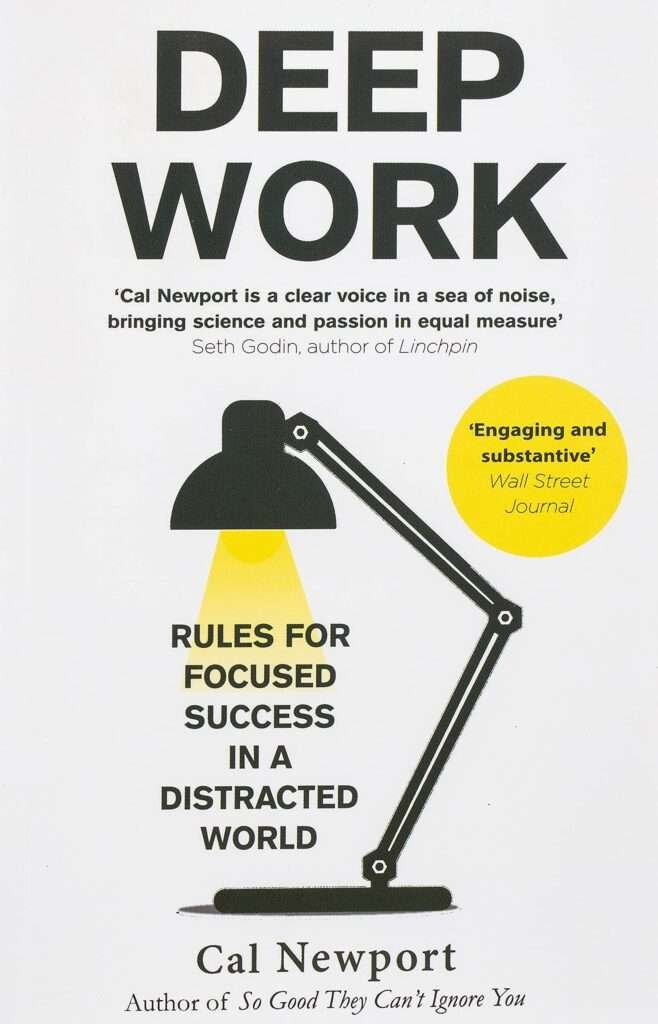
6. “Essentialism: The Disciplined Pursuit of Less” by Greg McKeown
Summary:
Focused on Only What Matters Most (out of print) “Essentialism” The Disciplined Pursuit of Less by Greg McKeown was all about, Focused Oriental style to the case and subtracted Mind set. McKeown preaches a disciplined way of life and work where you put your time, money or effort into things that give the greatest ROI. The benefits of essentialism are improved productivity as you learn to focus on what is important, and although I recommended that all people should try it — in truth they very well might not.
Key Lessons:
- Less But Better: According to McKeown, by saying no to nonessentials activities and every request that comes your way you create more time for the stuff of real value. When you do this, it prevents burnout and also ensures that your energy is being funneled to activities which are in line with what you want from life. McKeown advises re-evaluating your tasks and obligations to decide what is necessary — and get rid of everything else.
- Designing Life Intentionally: The book tells you to design your life; work deliberately, be productive and box out distractions with a productivity role player. This sort of direction setting involves by establishing consistent priorities; streamlining activities and regularly scrutinizing all the projects you are involved in to make sure they serve your long-term interests.
- The Disciplined Pursuit of Less: Essentialism is not about how to get more things done, it’s about making the right choice on what few things actually matter. Focusing on the Essential, writes McKeown, is what allows you to achieve streamlined results in both your personal and professional life. It means choosing what you commit to and being willing hand in work that is not aligned with your priorities.
- Only you can control: it and here McKeown pushes for some one-on-one time, where the left column personal space is built in so that there will be room to think, plan or just rest. He claims that time for reflective and resourcefulness is necessary to continue productivity, as well provide a greater perspective in making decisions.
Practical Application: The next time you grab your daily to-do list, or eyeball the bullet points of what everyone expects for you today — consider if it aligns with where you want to be in 5 years and start practicing essentialism. Employ productivity methods such as time blocking and prioritizing tasks to focus on the important, and say no to everything else. Create systems that define boundaries to prevent people from taking advantage of your time and preserving some space for thinking, planning, relaxation. This is especially helpful if you are prone to over committing yourself or saying yes when opportunities come along that do not really align with what it is you have your sight on.
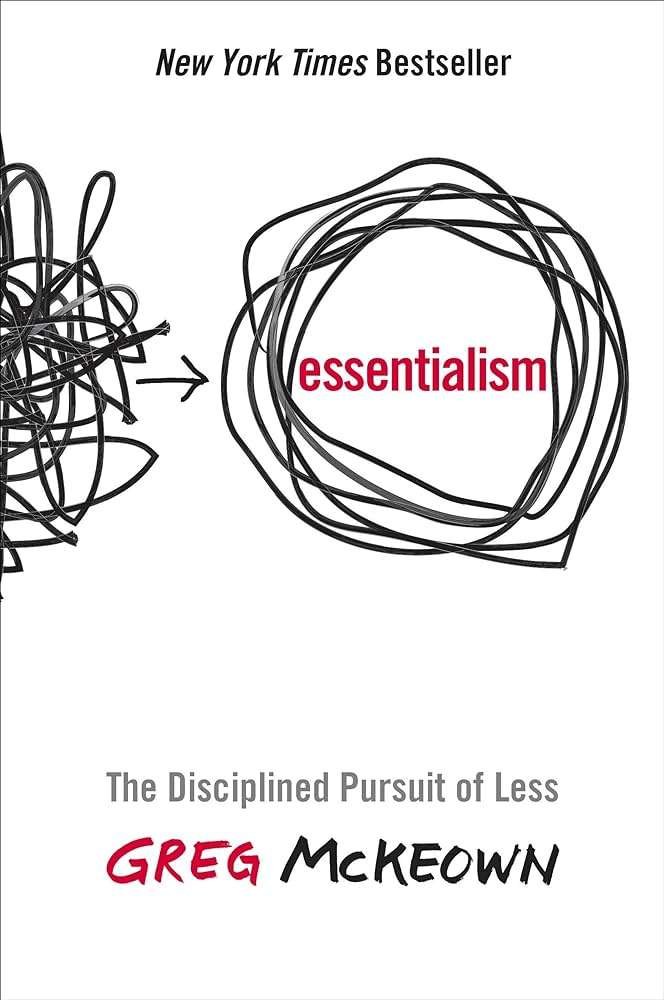

Why We Need This? | Productivity Tools Books
Time, Tasks & Energy are the basic resources one has to manage in today’s busy fast running life and that is why Productivity tools have become so popular. If we do not make use of these tools, then the deluge — busyness and distraction that vie for our attention. The productivity tools are designed to streamline processes, prioritize tasks, maintain focus so that we utilize our time and achieve the goals. Without knowing how to use these tools as intended, we create strain and take more time for doing a lot of things the hard way.
Productivity tools are not only useful for handling day-to-day tasks but also capable of accelerating your success over the long-term. Our goals do not go to plan and life gets on the way too, so these tools are a mechanism of structure without it you will crash. They allow us to find work-life balance time for both our professional and personal pursuits. In the end, productivity makes us live more deliberate and consequentially richer lives because it keeps our attention on what actually matters.
How It Can Help in Our Life? What is the Benefit? | Productivity Tools Books
Incorporating productivity tools into your life offers numerous benefits:
- Improved Concentration: By using productivity tools, it helps you focus on what needs to be done most eliminating any distractions making more productive. With practice and tools like time-blocking, To-Do apps, automation-you build an ecosystem that nurtures deep work. This increased focus results in better work and quicker progress toward your goals.
- Higher Time Management: It Will Make You Plan your time in this way that you at least give enough time to all the most important work which you do not pay attention too. Withdraw your energy and focus from simple things to more important issues, gather the power of all lost motivation on one way with help https://oliviasmiles.com/, feel a surge of strength in seconds – this is not magic! Managing your time well also helps you not to burn out, since it allows for rest and relaxation.
- Improved Productivity: As productivity tools automate processes and streamline workflows, they make time available for higher-level thinking. It helps you do more, in less time and is the least likely to lead into burnout. Similarly, when you can focus more of your attention on a specific task or interaction that means either faster turnaround times (one reason our team has recently restructured to include more dedicated community managers) OR the ability for each person/area to take in even MORE without being overloaded.
- Decreased Stress: A framework for handling tasks and responsibilities alleviates the mental stress of trying to recall it all. They create structure and much-needed order in your life, while also providing clarity that helps you stay organized and on top of things. Less stress results in better mental health and well-being.
- Goal Achievement: Productivity tools help you set up your goals and maintain them by breaking it into small tasks so as to continue ensuring that progress is made. This in return leads to increased satisfaction and motivation. This alignment with what is natural and needed can lead to growth, which comes in tiny increments.
By using these tools as part of your daily ritual you can boost your productivity, lower anxiety and get good results in meeting (and surpassing) those goals. As a student, professional or entrepreneur, productivity tools can aid yourself in making use of your time and living a more purpose-driven life.
Why Books for This Case? | Productivity Tools Books
Books offer a detailed, in-depth look at how the productivity tools provide both an overview and description of what makes these great techniques work. These are tips from folks who have been working with these tools for years and know how to get the results readers so desperately need. You get to learn from the experiences of others and you can understand better principles that govern effective time management, with their related productivity tools. After all, books promote ongoing learning and development–key ingredients in long-term productivity.
Books also offer you a linear and guided way of gaining knowledge on productivity tools. Unlike articles or videos, which focus on only one dimension of a particular tool, books give you an overall picture helping you how various tools and techniques could be weaved together to increase efficiency. In addition, most of the books are going to give real world examples and case studies that help you understand in what context we can use these tools as it is very important. Whether you are just getting started with productivity tools or want to continue perfecting your strategy, books provide a fantastic way for broadening knowledge and increasing overall efficiency.

Conclusion | Productivity Tools Books
In a world that moves as quickly as our own, productivity tools have never been more important. So, these six books from this article is here to guide you through on how and the right ways in dealing with other growth hacking tools. If you are looking to optimize your time better so that whatever it is that consumes yours at 3 minutes and counting does not consume even more of the rest of us. these books can help point out how. Incorporate the lessons from these books into your routines and you can not only lead by falling idiot tragedy but also take control of your time to achieve more life harmony.
In addition to teaching you how to use productivity tools, these books also explain the general principles and logic behind why they work. Learning these 5 principles allows you to create your personal guide for productivity. It doesnt matter whether you are a student looking to take your productivity level up notch, or if a professional(Employed) trying to get things done faster and more efficiently at work place OR an entrepreneur willing to do everything it takes for the company establishment these books provides you knowledge along with strategies that can lead paint successful future in front of our all failures.
FAQs | Productivity Tools Books
Q1: Can these productivity tools be applied to both personal and professional tasks?
A1: True, the productivity tools covered in these books are applicable to personal as well as professional mayhem. They allow you to more effectively run all parts of your life and therefore stay on course with the rest of them. Organize Your Job DutiesWith work projects, or even as a household responsibilities planner.
Q2: Do I need special software or apps to use these productivity tools?
A2: There is a lot of software and apps to improve productivity available out there, but these books focus on using simple tools like a calendar, paper journal or todo list app. The trick is to apply methods consistently across the board. In truth, most of the concepts discussed — time blocking or habit stacking for example— require no special technology and can be adopted by almost everyone.
Q3: How long does it take to see results from using these productivity tools?
A3: Your mileage here will vary based on how faithfully you employ the tools, and whether or not they fit into your work flow. Nonetheless, most people will experience a boost in productivity and general well-being after 2–14 days of implementing these tactics. You just have to start slow and build momentum then adjust as needed…until you find what works best for you.
Q4: Can these productivity tools help with overcoming procrastination?
A4: Absolutely! A lot of the productivity tools mentioned in these books are essentially building a ‘castle’ against procrastination by making tasks small, clear priorities and enable structured work. The GTD method, time blocking and habit stacking can help getting the wheels moving & build momentum to make steady progress that keep procrastination low.
Q5: Are these productivity tools suitable for teams as well as individuals?
A5: True, a lot of the tools and techniques discussed in these books do work for teams as well. These team unlock methods are like the GTD system and time blocking ensure greater collaboration within a team and everyone is fetching from the same well. Together in a team environment these tools will help you to improve communication, efficiency and prevent your projects from going off the rails.
Check Out The Sources
Check Out More


